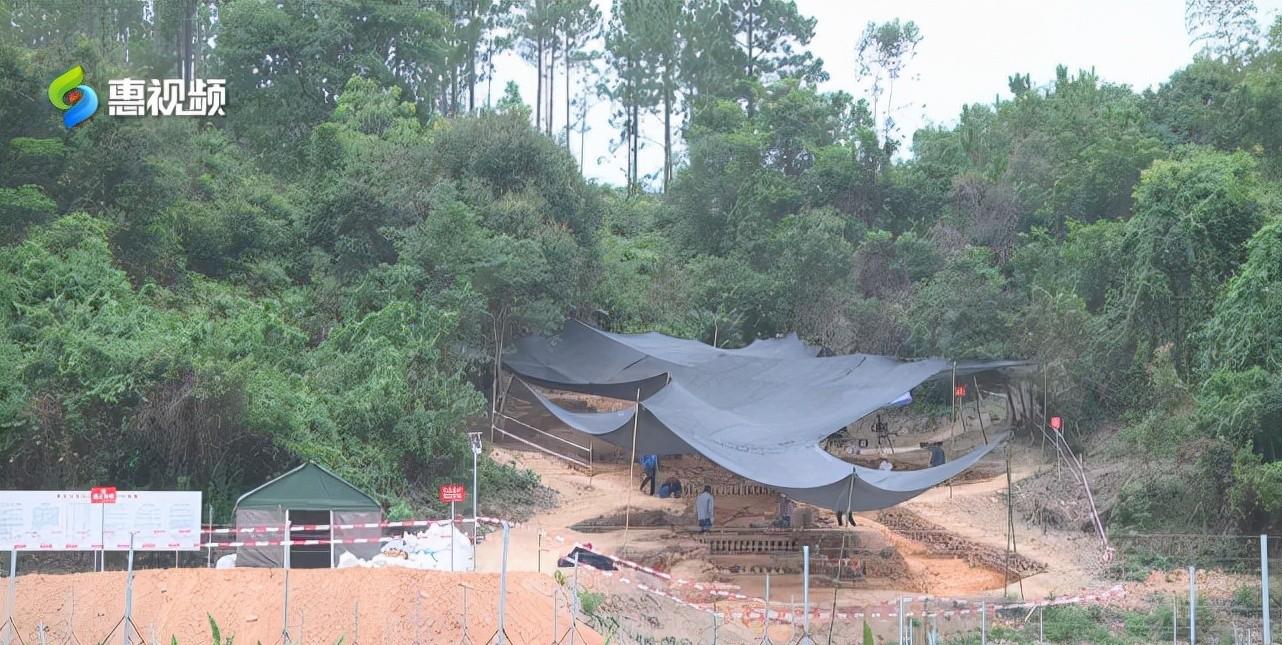Huizhou City, Huidong County, Bai Pen Zhu Sanguan Pit kiln site archaeological work has made new progress, the reporter recently learned from the Guangdong Provincial Institute of Cultural Relics and Archaeology, through a long period of meticulous exploration, archaeologists have excavated 2 kilns here, and the kiln is not only maintained well, but also a large number of cassette bowls, porcelain pieces and so on.

Through the exploration and investigation of the Guangdong Provincial Institute of Cultural Relics and Archaeology, it has been determined that 5 kilns and 10 abandoned piles of the Bai pen zhu Sanguan pit kiln in Huidong County have been identified, and the site area has reached 11,000 square meters. The archaeological excavation, which covers an area of 500 square meters, revealed two of the best-maintained kilns at the Sanguankeng kiln site.
Ma Haosen, an archaeologist: Now what we have to do is to remove this layer of brown soil, because this kind of soil that is slightly reddish, including this kind of soil that has a little white point, is a soil layer that we are looking for, so we have to scrape this off and look at the entire distribution range of this soil layer.
In recent years, the Guangdong Provincial Institute of Cultural Relics and Archaeology has conducted a regional systematic survey of the Ming Dynasty imitation Longquan porcelain kiln site in the Baima River Basin. The survey found that within the scope of the Sanguankeng kiln site, there are a large number of cassettes, porcelain pieces, gaskets, cushion cakes, etc. scattered on the surface, the remains are clear and clear, the product quality is large, and it is an important Ming Dynasty imitation Longquan porcelain kiln in the Baima River Basin, which has important academic value and research potential for the study of Guangdong celadon porcelain, export porcelain in the Ming Dynasty and the social ecology of the coastal areas of Guangdong in the Ming Dynasty.
Archaeology team member Chen Yusheng: The kiln room that has been exposed now belongs to the typical sub-chamber dragon kiln in the south, and 9 kiln chambers have been revealed, with a total length of about 26 meters and a width of about 3.5 to 3.8 meters, and each kiln room has two kiln doors, and then the kiln bed is placed with a box bowl for firing porcelain bowls.
Liu Chang, director of the office of the Guangdong Institute of Cultural Relics and Archaeology: On the one hand, we are cleaning the porcelain excavated now, and then we may carry out some repairs that are relatively complete and repairable, and then there are some porcelain pieces that we will send to do some scientific tests to understand some of its chemical composition and various indicators, which will be of great help to us in our future research on the export of the White Horse Kiln, including its trade routes.
It is understood that the excavation cleaned up a total of 10 relics, including 2 kilns, 8 ash pits, the kiln structure is relatively complete, and thousands of Specimens of Ming and Qing relics such as kiln tools and porcelain were unearthed. Among them, daily necessities are the mainstay, there are bowls, plates, etc., the carcass is relatively thick, the shape is regular, most of the ornaments are depicted with chrysanthemum petals, and some bowl hearts are also carved with the words "Qing", "Fu", "Shou", "Xi" and so on.